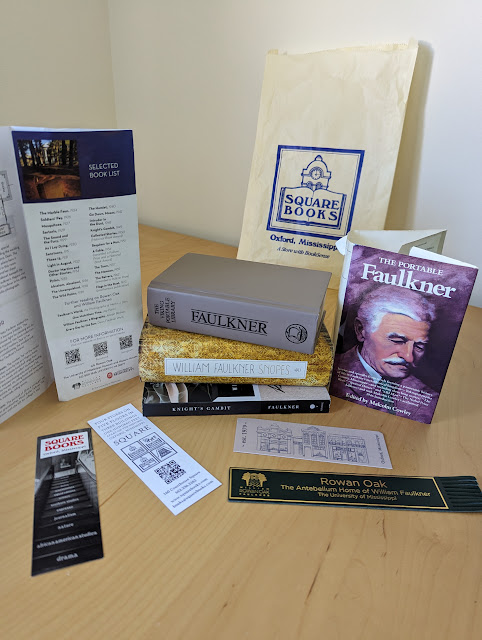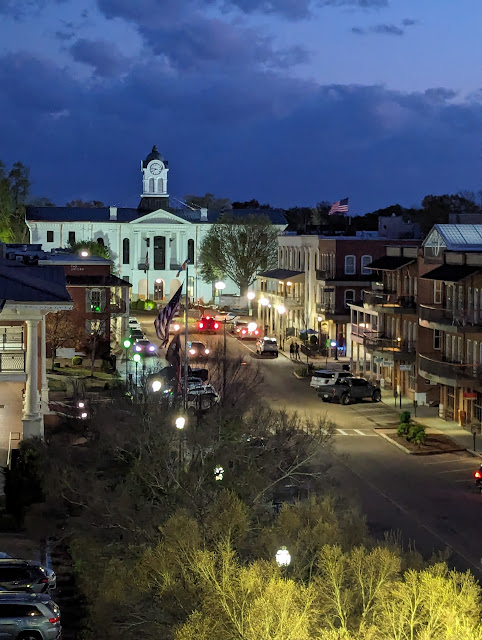Here is what I wrote about "The Moonstone."
The
Moonstone
“Novel
Thoughts” column for January 18, 2025
Tammy
Marshall
Do you love a good mystery? Read
“The Moonstone” by Wilkie Collins. Do you enjoy reading the classics? Read “The
Moonstone.” Are epistolary novels your thing? Read “The Moonstone.” Do you
appreciate quality writing and a master storyteller at the top of his game?
Read “The Moonstone” by Wilkie Collins.
I could go on and on with reasons
for you to read this novel – the characters are phenomenal, the voice of each
resonates differently and realistically, the setting is drawn so vividly that
you’ll feel like you’re there, etcetera. Perhaps the reason that might beguile
you the most, though, is that this novel launched a beloved literary genre.
Imagine a world without Sherlock
Holmes, Miss Marple, Nancy Drew, Encyclopedia Brown, and so many other beloved
sleuths and detectives, whether amateur or private. That would be a sad world,
in my opinion. The suspense genre involving a detective who unravels a mystery exists
because Wilkie Collins wrote “The Moonstone.”
The Moonstone itself is a large,
yellow diamond that was stolen during a military siege in India. A curse
follows it to England, and three Hindu Brahmins are determined to recover it. The
man who took the diamond later bequeaths it to his niece, Rachel Verinder, upon
her 18th birthday where its “curse” continues to create havoc upon
the family.
For starters, the Moonstone disappears during the
night from Rachel’s locked bedroom, and an inquiry into its disappearance leads
to wrong conclusions and problems for everyone. We, the readers, are as
perplexed as the police superintendent who first tries to discover the truth
yet who bungles things so much that a private detective is brought in. His name
is Sergeant Cuff, and he sees things that others have missed.
The story is told in an interesting fashion – through
written accounts of people who were there when the diamond was stolen and
others who were around Rachel after she left the area. The longest account
comes from Gabriel Betteredge, the longtime head servant of the Verinder
household. During his account, I couldn’t help but picture Mr. Carson, the
butler on the Downton Abbey series, because of how prim and proper he is in his
duties and how proud he is of the family members he serves.
These first-person accounts were a precursor to a
story technique that has risen in popularity with authors over the past few
years – the unreliable narrator. Since each person is only privy to what he or
she saw and heard, each account, taken alone, paints an incomplete picture that
leaves the reader with more questions than answers, but taken together, the
accounts tell a complete, and intriguing, story.
Collins and Charles Dickens were contemporaries and
friends, and Dickens first published “The Moonstone” in serialized fashion in his
magazine called All the Year Round. This began in January of 1868, and
the story ran through that August. Here we are, 156 years later, just as
enthralled by the story as readers were back then.
As a mystery reader and a mystery/suspense writer
myself, I owe Collins an additional debt of gratitude for creating a literary
genre that has brought me many years of reading pleasure and countless hours of
writing joy. As I said in the opening paragraph, read “The Moonstone.”
The
Mill on the Floss
“Novel
Thoughts” column for March 15, 2025
Tammy
Marshall
On March 21, 1860, Mary Ann Evans, better
known as George Eliot, completed her second novel and dedicated it: “To by
beloved husband, George Henry Lewes.” Lewes wasn’t her husband in the eyes of
the law – he was married to another woman – but Lewes and Evans lived together
for 25 years and considered themselves married. To be taken seriously as a
writer, she took a male pen name and chose George in honor of Lewes. She would
go on to write five more novels and become, by the estimation of many, one of
the greatest, if not the greatest, English novelist of all time.
That second novel is “The Mill on
the Floss.” The title represents the setting for much of the story – a mill on
a river called the Floss. This is a setting quite familiar to many communities
in Northeast Nebraska that grew out of such a beginning – a mill on a river
called the Elkhorn.
The mill and the river are instrumental to the story, but
the heart of the novel is Maggie Tulliver, the miller’s daughter. She grows
from an impetuous little girl who wants nothing more than the love and respect
of her older brother, Tom, to a young woman who still craves her brother’s love
even as she tries to find true love and her place in the world while being bound
by the social conventions of the time and place in which she was born.
Women in Victorian England had few
prospects. For most, their lives were dictated by whatever their fathers could provide
for them as children and by whatever their husbands, if they managed to find
one, could give them as adults, and if they didn’t marry, they were reliant on
male relatives or went into some sort of service, religious or otherwise, to
support themselves – that was their lot in life. Eliot well understood
society’s treatment and expectations of women and illustrated that impact upon kind-hearted
Maggie in what is considered her most autobiographical novel.
Maggie is smarter than her older
brother, yet she isn’t allowed the same type of education he is given. Their father
goes bankrupt and loses everything, including his senses and later his life;
and Tom’s and Maggie’s futures are irrevocably changed along with that of their
mother. Due to the bankruptcy and their father’s downfall, Tom harbors ill will
toward a man who loves Maggie, so he forbids her from seeing him; out of her sisterly
devotion to him, as well as the societal expectations of her, she obeys his
wishes and changes the course of her life by doing so.
The river, though, has the final say
in the course of both Maggie’s and Tom’s lives. It is the life force that draws
the siblings together at the end to their ultimate ruin.
Rivers are the perfect metaphor for
life, starting small from a spring or a creek and growing with time, flowing
ever onward until they end. Eliot uses this analogy in the novel to hint at
Maggie’s fate: “Maggie’s destiny, then, is at present hidden, and we must wait
for it to reveal itself like the course of an unmapped river: we only know that
the river is full and rapid, and that for all rivers there is the same final
home.”
George Lewes’ final home is in
Highgate Cemetery in North London in a tomb immediately behind the tomb of his
self-professed wife, Mary Ann Evans, a.k.a. George Eliot.
%20(1).jpg)



















































































